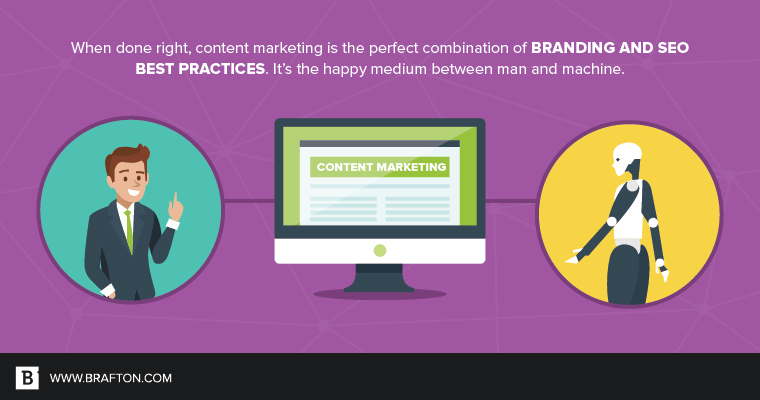Scary but true alert: Marketers want to control your brain.
Now, it’s not quite a “Manchurian Candidate” situation, but it’s not that far off, either.
Every choice made about each and every seemingly trivial detail of a company’s brand is designed to make you as the consumer react in a certain way.
Just take a look at this breakdown of various corporate logos and the way their color schemes suggest different emotional responses.
The effect is almost undetectable. We may all think that we’re the masters of our own minds, but the reality is we’re incredibly susceptible to brand messaging, and our purchasing decisions are often determined in some fashion by our impressions of different brands. It can be as overt as choosing luxury brands over more cost-conscious products, but it’s just as often far more subliminal than that.

Psychology Today noted that emotions play a huge role in consumer behavior, helping determine what products we buy.
Think about it: Everyone has certain brand preferences that really defy rational explanation (all things being things equal, I’ll go with Duracell over Energizer every day of the week and twice on Sunday – Energizer Bunny be damned).
Over time, we formulate emotional connections to brands that stick in our heads, and when the time comes to make a purchase, whether it be paper towels, laundry detergent or AAA batteries, we gravitate toward those specific product lines.
Marketers and advertisers work their fingers to the bone to make sure their brand is the one that pops up in your head when you’re walking down the supermarket aisle, wandering the department store or perusing Amazon. Try as we might to control our own destinies, we’re ultimately at the beck and call of brand messaging.
SEO: Marketing for Google’s ‘brain’
In a similar fashion, SEO functions as the trigger to make certain web pages pop up in Google’s “brain.” Ditching the emotional element entirely, Google and other search engines try to account for relevance and popularity to determine what pages should appear in search results. Keywords and links (plus a whole lot more) all play into Google’s increasingly complex and sophisticated algorithm.
After Google’s crunched the numbers and considered the different variables, its algorithm returns search results based on what it thinks the user wants to find. The result can often be right on the nose. If you Google “Taco Bell near me,” odds are you’ll get a list of Taco Bells in your general vicinity (unless, of course, there are no Taco Bells in your area, in which case I’ll shed a single tear for you next time I’m chowing down on a Quesarito).
Balancing the human element of brand identity with the more robotic nuts and bolts of SEO best practices is where a lot of people get tripped up with their content. How do you reconcile Google’s mathematical criteria for search results with the need to engage with people on an emotional level?
That’s where content marketing comes in.
More human than human: Content marketing links branding and SEO
Good content marketing should bridge the gap between time-tested brand messaging practices and the ever-evolving SEO game. What makes good content marketing? Here are a few tips to get you on the right path:
1. Give readers value:
There was a time when businesses could get away with making a few tweaks to the backend of their website, stuffing a ton of keywords into a bunch of poorly worded blogs and calling it a day. Thankfully, those days are long gone. Like William “The Refrigerator” Perry, Google’s algorithm is no dumb cookie. It’s grown more sophisticated with each new update, and it’s gotten awfully good at distinguishing valuable content from pages that are simply trying to game the system.
Whether you’re answering a question, offering helpful tips and tricks or presenting your unique take on the latest trending topic, your content needs to provide real value to walk that line between SEO and branding. While factors like keywords remain important to SEO ranking, they’re merely parts of the equation, not silver bullets in and of themselves.
2. Read the Google tea leaves:
Keep your eyes peeled for new updates to Google’s algorithm that could affect your site’s ranking and performance. While Google itself is unlikely to ever detail how exactly you should change your SEO strategy to align with its latest updates, there are numerous sites out there to help you out. As long as you’re always watching for the next development and able to respond quickly, you’ll avoid taking a huge hit to your SEO ranking.
3. Define your brand voice:
This goes back to that human element. We’ve discussed it before, but the point bears repeating: Your brand voice is the number one way you’ll engage with site visitors and communicate brand values and messaging. Screw that up, and it won’t matter how sweet your keyword strategy is.
If you’re having trouble conceptualizing your voice, think of it as an actual person. Who personifies your brand? It can be tempting to just default to your CEO, but really think through who that person is, and who they’re talking to, and the voice will come naturally.
4. Align your content with visitor intent:
So, you have content to engage site visitors at every stage of the sales funnel. That’s great. But are you absolutely certain the individual pieces of content match the visitor’s intent? A thought leadership blog that pushes readers to a sales demo could be a bit premature, for instance. You want to meticulously lay out your content so each piece is seamlessly moving leads down the funnel. Don’t get greedy and rush the process.
When done right, content marketing is the perfect combination of branding and SEO best practices, satisfying Google’s mathematical criteria for relevance while engaging readers on an emotional level. It’s truly the happy medium between man and machine. I guess you could say it’s a lot like Robocop.
*Strokes chin*
Yeah, yeah, that sounds about right. Don’t be an ED-209, be a Robocop.





